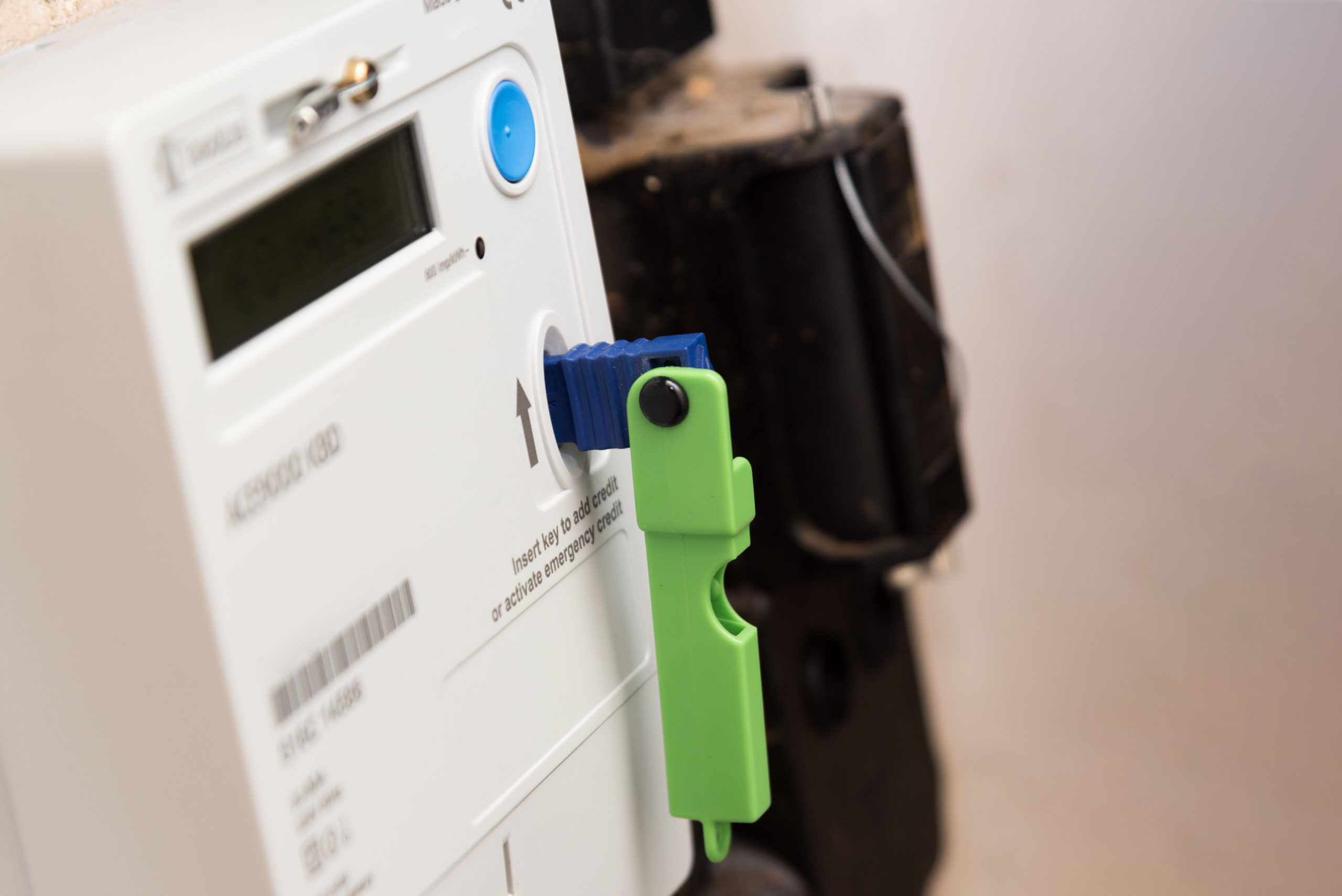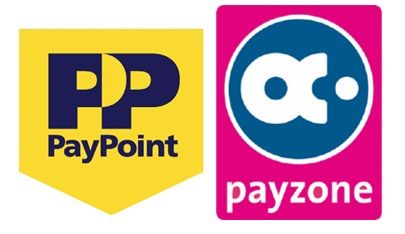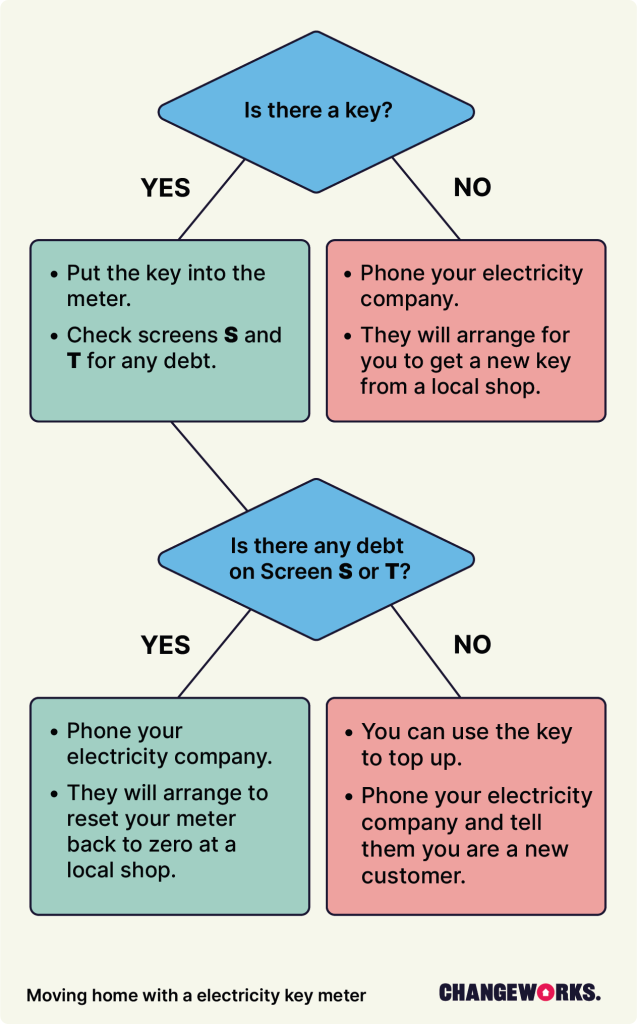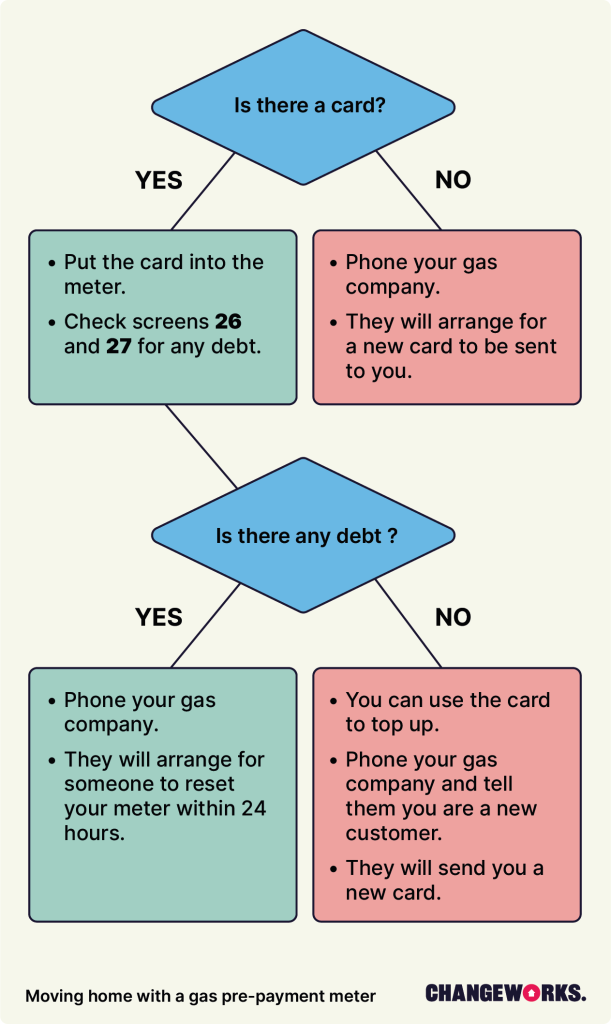Prepayment meters

What is a prepayment meter?
If you have a gas or electricity connection, your home will have a meter to keep track of how much you use. There are several different kinds of meter. With a prepayment meter, you buy gas or electricity credit up front. With other kinds of meters, you use the energy first, then get a bill for it later.
You can think of prepayment meters like the washing machines at a laundrette. You put coins or tokens in the washing machine. The washing machine runs for a certain amount of time. When your credit runs out, you need to add more coins or tokens so that it keeps working.
The first prepayment meters did actually use coins and tokens. Nowadays, nearly all prepayment meters have a special card or key. You put credit on your card or key at a shop, then transfer it to your prepayment meter.
The prepayment meter will have a slot for your top-up card or key. It will also tell you how much credit you have left, as well as information about the standing charge and any energy debt that you have.
Should you get a prepayment meter?
Having a prepayment meter means you only ever pay for the energy you use. There are no bills at the end of the month, and therefore no nasty surprises about how much you need to pay. However, there are number of things to think about before switching to a prepayment meter:
Buying energy upfront rather than paying a bill at the end of the month usually works out more expensive. Some suppliers don’t offer prepayment tariffs, whilst those that do only offer a limited range. As a result, it’s harder to shop around for the best deal.
Once you’ve spent the balance on your card or key, you won’t be able to use any more energy until you top up again. If your gas credit has run out, then anything that’s using gas will stop working. Likewise, if you’re out of electricity credit, then anything that’s using electricity will switch off.
Many suppliers offer emergency credit as a buffer. This means there’ll be a small amount of credit you can use if you’ve run out. However, the emergency credit will need to be paid back. It will be taken off your credit the next time you top up. For example, if you’re topping up £20 and you’ve used £5 emergency credit, you’ll be left with £15 credit on the meter after topping up.
Unless you have a smart prepayment meter, you’ll need to take your gas card and electricity key to a shop to top them up. Different suppliers have different rules about where you can top up. You should be able to top up at a either a Post Office, a shop with a PayPoint, or a shop with a PayZone logo:

You should check that you have a top up point which is easily accessible. Also, you’ll need to be careful not to run out of credit when your PayPoint is closed.
Find your nearest Pay Point location
Find your nearest Pay Zone location
You can ask your supplier for emergency credit if you run out whilst the shops are closed. This is known as friendly credit. Remember though, you’ll need to pay this back the next time you top up.
You won’t run into this out-of-hours problem if you have a smart pre-payment meter. A smart prepayment meter allows you to top up at any time. You can add money to the meter through an app on your smartphone or computer.
With billed energy use, usually it’s possible to spread the cost of energy evenly throughout the year. For example, a supplier might calculate that a household will use £2,500 of energy this year. In general, most of that money will be spent in the winter months, when the heating is on. The supplier could split that £2,500 into equal monthly bills of £208.
Let’s look at what might happen if the same household was on a pre-payment meter.
In spring and summer, they would likely be topping up less. For example, they might only be spending £100 a month. This is less than half the amount they’d have paid for their monthly bill.
However, in the colder months they would be topping up much more. As shown above, over spring and summer the household spent £600 (£100 a month) on topping up. If the household uses £2,500 over the year, then through autumn and winter they’re going to use almost £2,000 worth of energy. As a result, they’ll be topping up around £333 a month.
You can avoid spending a large amount on topping up in winter by building up credit in the warmer months. However, this does require some forward planning and budgeting, so it’s worth considering this when thinking about switching to a prepayment meter.
Running out of energy and not being able to top up can be quite serious for people with certain health issues.
We wouldn’t recommend choosing a prepayment meter if:
- You rely on electricity to run medical equipment.
- Someone in your household is disabled or has a long-term health condition.
- There are young or elderly people in the home.
You might also want to think about whether health issues would make it difficult for you to:
- Visit a top-up point
- Access the meter itself
How do you use a prepayment meter?
Both gas and electricity prepayment meters work in the same way. The major difference is that your electricity prepayment meter is topped up with a key, whilst your gas meter is topped up with a card.
To add credit to your prepayment meter:
- Firstly, take your key and/or card to a shop for topping up.
- Next, tell the shop assistant how much credit you want to add. You can only add whole pounds, e.g. £5 or £6, but not £5.50.
- Next, put the topped-up key or card back in your meter to transfer the credit to your meter.
- Finally, take the key or card out again and store it somewhere safe.
Your meter should have a button which lets you access different screens. These screens include information such as:
- How much the meter will take each week for the standing charge and any debt repayment.
- How much emergency credit you have left.
- If you have any energy debt.
Using a smart prepayment meter
With a smart prepayment meter, you have more options for topping up.
You should be able to top up:
- Through your energy supplier’s app. You will need to download the app from their website
- By calling your energy supplier
- Through your online account on your energy supplier’s website
- By taking your key, card, or barcode to a shop
It’s worth checking with your supplier if there are extra ways you can top up.
To learn more about the different screens on your prepayment meter, follow the links below:
How can you owe money on a prepayment meter?
Even though you buy credit upfront, you can still owe money on a prepayment meter. This could be because you’ve built up debt for standing charges. It could also be because you’ve used emergency credit and/or friendly credit.
Standing charges
Most energy suppliers set standing charges. This covers their costs for supplying energy to your property. It’s usually a daily charge which is separate to the cost of how much energy you actually use.
For example:
- Your standing charge for gas might be 28p per day
- Your meter will take this 28p from your credit each day, plus the cost of the energy you use that day
- If you don’t use any energy, then it will just take 28p
- If you don’t have any credit on the meter, standing charge debt will start to build up. For example, if your gas meter is without credit for 10 days, you’ll owe £2.80 (28p x 10 days). This would be taken off your credit the next time you top up
Emergency credit and friendly credit
Emergency credit and friendly credit mean that you can keep using gas and/or electricity when there’s no money on the meter. This works a lot like an overdraft on a bank account. You can spend more money than you have in your account, but it will need to be paid back.
Like paying off an overdraft, the next time you top up your prepayment meter, some of that credit will go towards paying off the emergency and/or friendly credit you’ve used.
For example:
Say you’ve used £5 emergency credit and £2 friendly credit. If you top up £10, then £7 will go towards paying off the money you owe. This means that of that £10 top up, £3 will end up as credit on your meter.
If most of your credit is going towards clearing the money you owe on your prepayment meter, then you should contact your energy supplier. Once you’ve made contact, they can work out a repayment plan. This might involve only taking part of what you owe each time you top up, not the full amount. Alternatively, prepayment meter debt can be paid off through regular card, cash or cheque payments.
To get help sorting out a repayment plan, check out our guide for speaking to your energy supplier.
Can you be forced onto a prepayment meter?
If you are in fuel debt, then some energy suppliers might want to switch you to a prepayment meter. In January 2024, Ofgem announced new rules on this, which we’ve summarised below. Ofgem’s announcement can be found on their website.
Prepayment meters should only be installed as a last resort. Legally, your supplier has to look at all the other options first. Once they’ve looked at all the options with you, they still need a warrant to come into your home and install a prepayment meter. If you have a smart meter, then your supplier can switch you to a prepayment meter remotely. However, they still need to have looked at all other possible options with you first.
There are certain situations where your supplier isn’t allowed to put in a prepayment meter, even if all the other options have been looked at. For a full list of these and more information about your rights regarding prepayment meters, see our Know your rights guide.
If your energy supplier has switched you to a prepayment meter against your wishes, then have a look at our Speaking to your energy supplier if you can’t afford your energy bills guide. This will help you negotiate a repayment plan. Additionally, it also explains how to make a complaint about your energy supplier.
How to change from a prepayment meter to direct debit
To change from a prepayment meter to direct debit payments, you’ll usually need to get a new meter put in. This is the case for all types of energy payments which involve getting a bill rather than topping up.
If you have a smart prepayment meter, then you won’t need to have a new meter put in when switching to direct debit payment. This is because most smart meters can be switched between prepayment and billed modes by your energy supplier.
To change from a prepayment meter to direct debit (or any other type of billing) you should contact your energy supplier. Ask your energy supplier to:
- Switch you over to a smart or conventional meter. Your supplier isn’t allowed to charge you for this.
- Help you get set up with a new tariff.
Moving to a home with prepayment meters
If your new home has a prepayment meter, then the advice below will get you up and running as quickly as possible.
For an electricity meter:

For a gas meter:

How to read a prepayment meter
You pay for your energy upfront with a prepayment meter. As a result, you don’t need to send regular meter readings to your energy supplier. However, if you do need to take a meter reading, just follow the steps below.
There are lots of different types of prepayment meter out there. If the advice below doesn’t work for your meter, contact your energy supplier to ask how to take a reading.
If your gas prepayment meter has two display windows, then the meter reading should be in one of the windows. Look for a number that’s followed by “m3”. Ignore any numbers after the decimal point.
If your gas prepayment meter only has one display window:
- Firstly, Press the red “A2 button to turn on the display.
- Next, press the red “A” button twice.
- This should show a “Meter Index” screen. This is the meter reading.
- You can ignore any numbers after the decimal point.
You’ll need to move through a few screens on the meter to find the reading.
- Firstly, press the blue button to turn on the display.
- Next, press the blue button to move through screens. Look for a screen that has a number followed by “kWh”.
- If you pay different rates for electricity (a day rate and a night rate), these will be on separate screens. The first screen should say “rate 1”. The next screen should say “rate 2”.
- You can ignore any numbers after the decimal point.
How you read your smart prepayment meter will depend on the type of smart meter you have.
Citizens Advice have put together a couple of excellent guides to help: